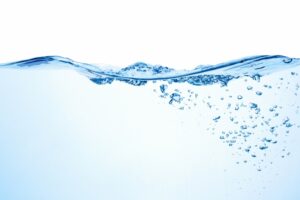If you’re not happy with the quality, safety, smell, taste, or clarity of the water coming from your municipal supply or your well, it’s time to get a water filter. But there are so many things that might be in your water, and so many different water filtration systems! What should you choose?
A whole-home water filter is ideal, providing a safety net right where the water enters your home. But what contaminants can it remove?
First, a point to consider. Different filtration systems work best for removing different contaminants. You can be sure you’re addressing the right concerns by knowing what your water contains and getting specific recommendations from an expert in whole home water filtration in Marana, AZ.
Sand, Silt, and Sediment
Almost any water filter can remove these simple particles from your water. The simplest type of water filtration system is just a physical filter, meaning that it traps any specks in the water the same way your coffee filter traps coffee grounds, simply by providing a physical barrier.
Sand, silt, and sediment can cause your water to be cloudy, and it can build up in your water heater and cause mayhem there. But it won’t generally cause a strong smell or taste, and it isn’t a threat to your health like some chemical contaminants can be.
Chlorine and Chloramine
While the purpose of putting disinfectant into water is to kill the bacteria that could do you harm, the result is a swimming-pool smell and taste that can be thoroughly unpleasant. We often recommend the Enviro whole home water filtration system, which does a remarkable job of removing chlorine from water—97% of it, in fact!
Another concern is that when disinfectants react with organic matter in your water system, they can create disinfection by-products or DBPs, also called trihalomethanes. These chemicals, in strong enough concentrations, can negatively affect liver and nervous system function.
Inorganic Chemicals
This is a broad category of potential water contaminants. Frightening contaminants with serious health effects like arsenic, mercury, and lead fall under this category. Other inorganic chemicals often found in drinking water include things like magnesium and iron, which don’t pose health risks but can lead to mineral scaling in your plumbing and staining on your fixtures.
Organic Chemicals
Industry and agriculture can cause organic chemicals to leach into soil and contaminate water supplies. We often hear the word “organic” to mean natural or healthy, but these chemicals can be anything but. Consider two common agricultural chemicals often found in drinking water.
Atrazine and glyphosate are commonly used in agriculture as herbicides. Glyphosate is banned in 28 countries and many US counties and cities because it increases cancer risk. Atrazine is banned in the entire European Union and some US states and territories (but not Arizona) as it disrupts the endocrine system and raises the risk of reproductive cancers and birth defects.
As you can see, potential contaminants in your water supply should be taken seriously. Our team of highly-trained water quality experts will be happy to help you assess your water and make a plan to keep your family healthy and safe.
Contact Picture Rocks Cooling, Heating & Plumbing today to schedule an appointment with our professionals.


